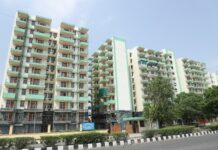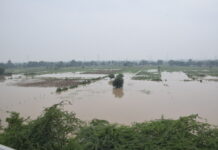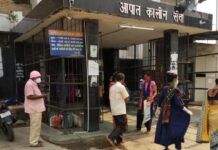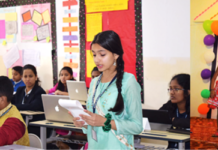[vc_row][vc_column][vc_column_text]
As the Covid19 struck India hard with vengeance in its second wave we were witness to a phenomenon where democracy was put to test with many institutions failing in their calling. At a time when people could be seen dying in thousands all over the country for want of oxygen and ventilator right in front of hospitals overflowing with patients the governmental machinery was nowhere in the picture except the lower judiciary.
In such cataclysmic times when the victims of the dreaded disease and their relatives had no one to look to in their hour of need, they were deserted by the state machinery which would otherwise have been the last hope under the circumstances. However, this one institution, judiciary especially the lower judiciary, rose to the occasion like a phoenix holding out a hope for the hapless denizens. It’s the lower judiciary which kept our faith in democracy intact.
In April and mid May when the coronavirus, in a new and more lethal avatar, was on the rampage throughout country leaving behind a trail of death and mayhem, high courts stood out as the only solace amidst the failed system. These high courts deserve all encomiums for contributing their bit to safeguard the social fabric of the country along with the army of concerned citizens, social and non government organisations (NGOs).
This judicial activism, coming from the high courts at a time when the Supreme Court of India is of late being perceived to have grown cold feet over issues of public interest, is a surprise for many. Not too long ago, the apex court had faced strong criticism for interference in the matters coming under executive’s domain perceived as judicial activism. On many occasions in the recent past, the Supreme Court considered it a constitutional obligation to reprimand legislature for arbitrary decisions. It even took suo moto cognizance of matters pertaining to public interest. These judicial initiatives were justified as preventive measures to ensure that the democracy does not tread a rocky patch. High on brute majority, the executive tends to run down weak Opposition and stifle the voices of dissent to have its way. This is best illustrated in the recent decision to hold the Kumbh Mela in the middle of the second wave of pandemic adding to the burden of corona cases on the medical system.
In the religious event mega event, hundreds of thousands took part in holy dip in River Yamuna risking their own lives and that of others including their own near and dear ones.
As if this was not enough, ignoring health advisories from prominent medical experts, the government allowed massive public meetings during assembly elections in five states and a Union territory. Massive election rallies went on unhindered alongside the super spreader religious congregation putting millions of lives in danger. The government forced its way through such whimsical decisions silencing every dissenting voice that it encountered. Against this backdrop courts in the country turned the “safety valves” against the
authoritarianism streak.
“incompetence”
The courts not only questioned the omissions and commissions of the Central government but also pulled up prominent institutions, both statutory and autonomous, like the Election Commission of India (ECI) for going along with the government, and not standing up against such anti-people moves. When oxygen was in short supply at the peak of the second wave, it was these courts which sounded a warning to the government to provide oxygen to the hospitals with a caveat, “beg, borrow or steal”.
When the country was losing more than 3,ooo lives to covid on a daily basis, the courts gave the country that rare peek into how strong institutions uphold democratic values. Judiciary, in keeping with its standard traditions, slammed, grilled, issued show-cause notices to the executive. Judges rose to the occasion pulling up the government in the strongest terms rarely seen before.
The famous “beg, borrow, steal” remark by the Delhi High Court in while hearing an appeal by the Max Hospitals in Delhi NCR region raising the issue of acute shortage of oxygen will go down in the history of democracies as the momentum when upright judges stood up against the powers that be and forced them to act and thereby restored the confidence of the people in the system.
“Citizen can only fall back on the state. So you have to beg, borrow or steal and ensure the protection of fundamental emergency.” Such reprimand to the executive that faltered in its duty infuses confidence among the people.
Further, the Delhi High Court minced no words while raising doubts over the government’s commitment to save the lives of people saying, “It appears Centre wants people to die.”
“This is wrong. This is complete non-application of mind. Now people who do not have oxygen will not get Remdisivir either.” Such damning indictment against a sitting government is enough to shake portals of power. This lambasting of the government may or may not be interpreted as judicial activism, but it definitely stands out as a ‘balancing of power’ act at a time when other democratic institutions including the media was found wanting busy toeing the government line looking the other way or unabashedly adopting a posture of an apologist for the government.
The court asked the government ‘show cause’ as to why contempt proceedings should not be initiated against it, “for failing to comply with the court order on supply of oxygen”. Had it not issued the ultimatum, the deficit in oxygen supply to Delhi could not have been filled.
“Contempt is the last thing but it is there. Enough is enough”
Was a ‘matter of fact’ and plain speaking by the high court to the government and seldom-witnessed exchange of words by courts to any government. The Madras High Court, on the other hand, was most blunt in coming down heavily on the Election Commission for “not stopping political parties” from violating Covid protocol during campaign rallies for the assembly polls. It even called the poll body “irresponsible” for which it “must face murder charge”.
When no one within the government was ready to respond to the pressure from within the country and across the world which questioned huge election rallies and religious gatherings and demanding a ban, it was the Madras High Court which took on the might of the poll body. By doing so it took upon itself the responsibility of becoming that “safety valve” required for the upkeep of democracy. Terming dissent as the “safety valve of democracy”, Justice Chandrachud of the Supreme Court of India had once famously said that silencing of dissent and generation of fear in the minds of people go beyond the violation of personal liberty and commitment to constitutional values. When the government in its election spree wasn’t ready to acknowledge dissent and resentment of the people amidst deaths and despair caused by corona, the court’s tough stance not only took on the poll body but also checkmated the Centre thus acted like a ‘safety valve’. As a matter of fact, in none of the instances above courts acted suo moto, neither was it judicial outreach or criss-crossing the jurisdiction. It was the confidence of the people which sought court’s interventions to mitigate the crises pushed by covid surge. The courts just wasdoing its part, stayed firm and did not bow down.
The alacrity with which courts responded to the call of duty isalso important from the point of view of restoring the image of the judiciary as an important tool in the democratic process.
In the past few years, India has seen judiciary struggling to safeguard its own house from capitulating under political pressure which was reflected in the famous press conference in 2018 by four senior most judges of the Supreme Court who alleged that “democracy is in danger” because they saw executive interfering in the court’s affairs. Ever since the apex court role has been under the public scanner. Of the many allegations levelled against the apex court the one that much needed explanation was lack of urgency in hearing of the writs filed by the residents of Jammu and Kashmir against abrupt lockdown imposed on the state in the aftermath of the abrogation of Article 370.
The lack of urgency with which the court acted in the case of the habeas corpus writs and eventual orders were seen as a defeat of the writ. The petitions had sought and order to the authorities to produce people before the court to verify if they had been detained as per the procedures by the law. In this context, Justice Arun Mishra hailing Narendra Modi as a “versatile genius” is a case in point. His praise for the prime minister at an international conference is a serious breach into the impartiality of the judicial institution and justifies the concerns that “democracy is in danger”. Instances of sitting Supreme Court judge praising the prime minister derails the very belief of impartiality and fairness expected from the top court of law.
The sternness it showed while acting on Central government’s plea against high court’s ‘show cause notice’ to urgently supply oxygen may be a moment of reckoning for the apex court. It was like the rising of phoenix from the ashes to take charge of the life once again. Democracies, they say, thrive on the experiments with the truth and institutions are its able tools which needs corrections in ‘act of balancing’ time and again.
The famous verdict of 1975, of the Allahabad High Court, convicting then prime minister Indira Gandhi of electoral malpractices and debarring her from holding any electoral post triggered a major political event led by declaring of Emergency that changed the course of democratic history of India. Lessons learnt from Emergency are for life.
The phoenix has to turn to ashes every time to rise again and again. Second Covid surge in India proved to be that moment when we saw some stitching in the open wounds of
democratic pillars
[/vc_column_text][/vc_column][/vc_row]
Disclaimer: We do undertake rigorous checks on content provided by contributors before publishing the same. If you come across some factual errors, kindly bring this into our notice and we shall review your objection and claim as per our policy and display correction credits and corrections on the article itself.
The opinion expressed in the article is of the writer. Writer is a freelance journalist/journalist based in Delhi




























